![]()
 Usual lazy start to the day and then we take our life in our hands and go out for a drive amongst the crazies. Decide to follow the hop on off bus route.
Usual lazy start to the day and then we take our life in our hands and go out for a drive amongst the crazies. Decide to follow the hop on off bus route.
Miss the monastery en-route, perhaps god knows where it is but he won’t split.
Finally find the gorge and a quaint 4 person church, complete with confessional built into the rock. Alas the gorge isn’t that pretty.
 Then head to a fountain but thanks to a village map not having the all important “you are here” we give up on it.
Then head to a fountain but thanks to a village map not having the all important “you are here” we give up on it.
 Let’s head into town and visit the municipal gardens on the route. Apart from parking on zebra crossings, which seems to be a Crete favourite along with double parking and anything to stop the flow of traffic, there’s just no parking to be had. The pay car park is blocked with a Brocken down heap of rust. There’s not many car’s around here without dint’s or scrapes. Pass on the municipal gardens.
Let’s head into town and visit the municipal gardens on the route. Apart from parking on zebra crossings, which seems to be a Crete favourite along with double parking and anything to stop the flow of traffic, there’s just no parking to be had. The pay car park is blocked with a Brocken down heap of rust. There’s not many car’s around here without dint’s or scrapes. Pass on the municipal gardens.
 Head home and stop off at a bakery and coffee shop for some coffee and cakes sat in the sun.
Head home and stop off at a bakery and coffee shop for some coffee and cakes sat in the sun.
Decide to head up to the Arkadi Monastery which despite popular belief and web information is open. Lash out on a 3E visit.
Then it’s off back home for dinner.

The Arkadi Monastery (in Greek: / Μονή Αρκαδίου) is an Eastern Orthodox monastery, situated on a fertile plateau 23 km (14 mi) to the southeast of Rethymnon on the island of Crete in Greece.
The current catholicon (church) dates back to the 16th century and is marked by the influence of the Renaissance. This influence is visible in the architecture, which mixes both Roman and baroque elements. As early as the 16th century, the monastery was a place for science and art and had a school and a rich library. Situated on a plateau, the monastery is well fortified, being surrounded by a thick and high wall.
The monastery played an active role in the Cretan resistance of Ottoman rule during the Cretan revolt of 1866. 943 Greeks, mostly women and children,[1] sought refuge in the monastery. After three days of battle and under orders from the hegumen (abbot) of the monastery, the Cretans blew up barrels of gunpowder, choosing to sacrifice themselves rather than surrender.
The monastery became a national sanctuary in honor of the Cretan resistance. 8 November is a day of commemorative parties in Arkadi and Rethymno. The explosion did not end the Cretan insurrection, but it attracted the attention of the rest of the world.
![]()
 Lazy start to my 73rd birthday, then we’re off out with Brett, Karina has to work, for a trip up to Heraklion. A major busy city with the usual death wish drivers and car parking. One silly bitch decides to step off the pavement as we’re going past, alas we missed her so the gene pool remains polluted.
Lazy start to my 73rd birthday, then we’re off out with Brett, Karina has to work, for a trip up to Heraklion. A major busy city with the usual death wish drivers and car parking. One silly bitch decides to step off the pavement as we’re going past, alas we missed her so the gene pool remains polluted.
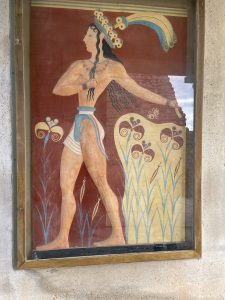 Had lunch in a nice restaurant overlooking the sea.
Had lunch in a nice restaurant overlooking the sea.
Pass on a walk around the town so we head off to Knossos a famous Greek Palace that’s even older than me.
 Then it’s back home for afternoon tea and birthday cake.
Then it’s back home for afternoon tea and birthday cake.
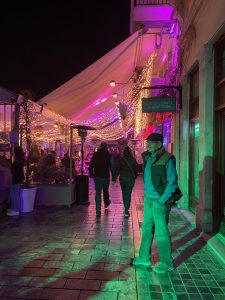 In the evening we head out to Raki ba Raki for yet another splendid meal. Nice end to a birthday. Birthdays, such a damn pain as a reminder you’re getting older.
In the evening we head out to Raki ba Raki for yet another splendid meal. Nice end to a birthday. Birthdays, such a damn pain as a reminder you’re getting older.

Knossos is the largest Bronze Age archaeological site on Crete and has been called Europe’s oldest city.
Settled as early as the Neolithic period, the name Knossos survives from ancient Greek references to the major city of Crete. The palace of Knossos eventually became the ceremonial and political centre of the Minoan civilization and culture. The palace was abandoned at some unknown time at the end of the Late Bronze Age, c. 1380–1100 BC; the reason is unknown, but one of the many disasters that befell the palace is generally put forward.
In the First Palace Period (around 2000 BC), the urban area reached a size of as many as 18,000 people.
![]()

Call in at the garage to get a slow puncture fixed. Typical Mediterranean business.
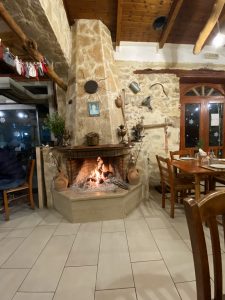 In the evening we all set off to Zorba’s taverna, as you can guess with a name like that it’s a typical Greek restaurant with some great food. Like sitting in someone’s lounge with Grandma doing the cooking.
In the evening we all set off to Zorba’s taverna, as you can guess with a name like that it’s a typical Greek restaurant with some great food. Like sitting in someone’s lounge with Grandma doing the cooking.
![]()
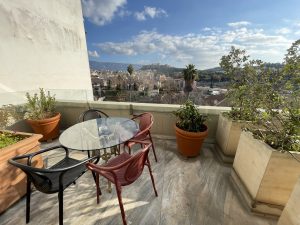
Our balcony, with views of the Acropolis.
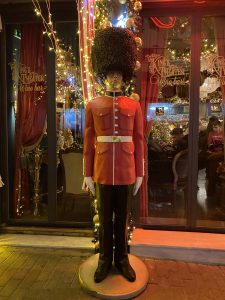
Restaurant district beneath the Acropolis.
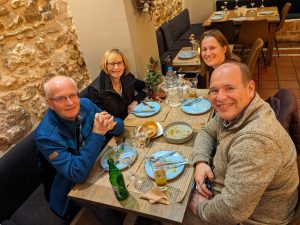 Then meet B&K at a typical Greek restaurant for yet another typical Greek meal, finally get a stifado and some great starters.
Then meet B&K at a typical Greek restaurant for yet another typical Greek meal, finally get a stifado and some great starters.
Stroll back through the restaurant district at the base of the Acropolis, such an amazing choice of restaurants and nowhere nearly as seedy as the surrounding area.
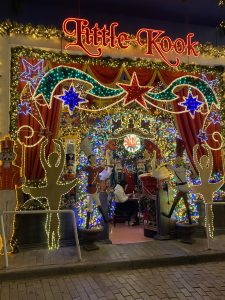 Then it’s a quiet night in watching TV.
Then it’s a quiet night in watching TV.
![]()
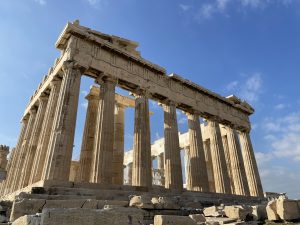
Good continental / Greek style breakfast. Then a lazy morning before setting off for a walk up to the Acropolis. It’s quite a way. Stop off for a beer and sandwich for Wendy. Fortunately it’s a sunny day so a pleasant walk up and a stroll around.
Dinner in the restaurant area under the Acropolis. Pretty good but having 4 cats watching every mouthful can be a tad off putting – only in Greece. 

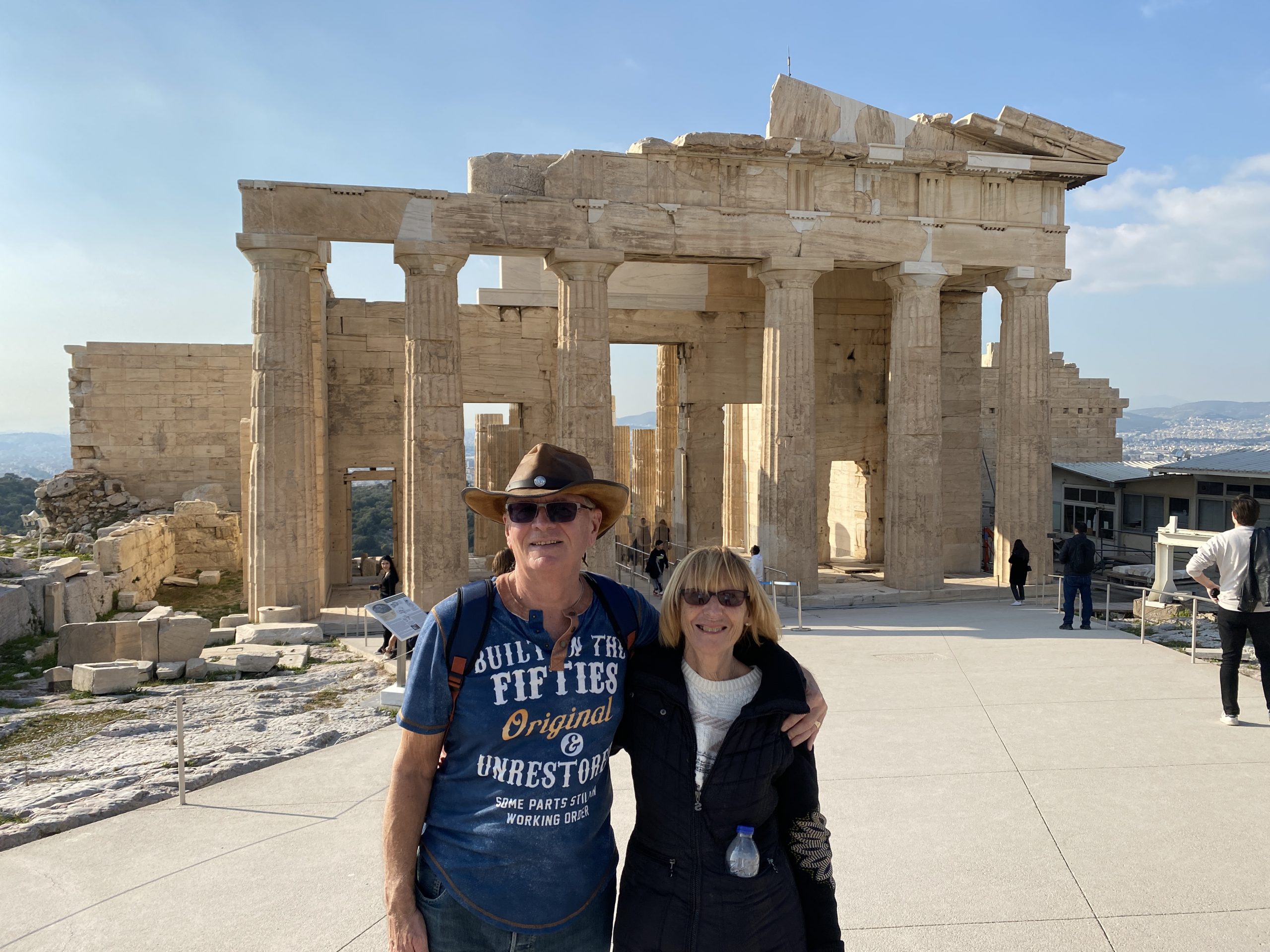 The Acropolis of Athens is an ancient citadel located on a rocky outcrop above the city of Athens and contains the remains of several ancient buildings of great architectural and historical significance, the most famous being the Parthenon. The word acropolis is from the Greek words ἄκρον (akron, “highest point, extremity”) and πόλις (polis, “city”). The term acropolis is generic and there are many other acropoleis in Greece. During ancient times the Acropolis of Athens was known also more properly as Cecropia, after the legendary serpent-man, Cecrops, the supposed first Athenian king.
The Acropolis of Athens is an ancient citadel located on a rocky outcrop above the city of Athens and contains the remains of several ancient buildings of great architectural and historical significance, the most famous being the Parthenon. The word acropolis is from the Greek words ἄκρον (akron, “highest point, extremity”) and πόλις (polis, “city”). The term acropolis is generic and there are many other acropoleis in Greece. During ancient times the Acropolis of Athens was known also more properly as Cecropia, after the legendary serpent-man, Cecrops, the supposed first Athenian king.

Acropolis view from our balcony.
![]()
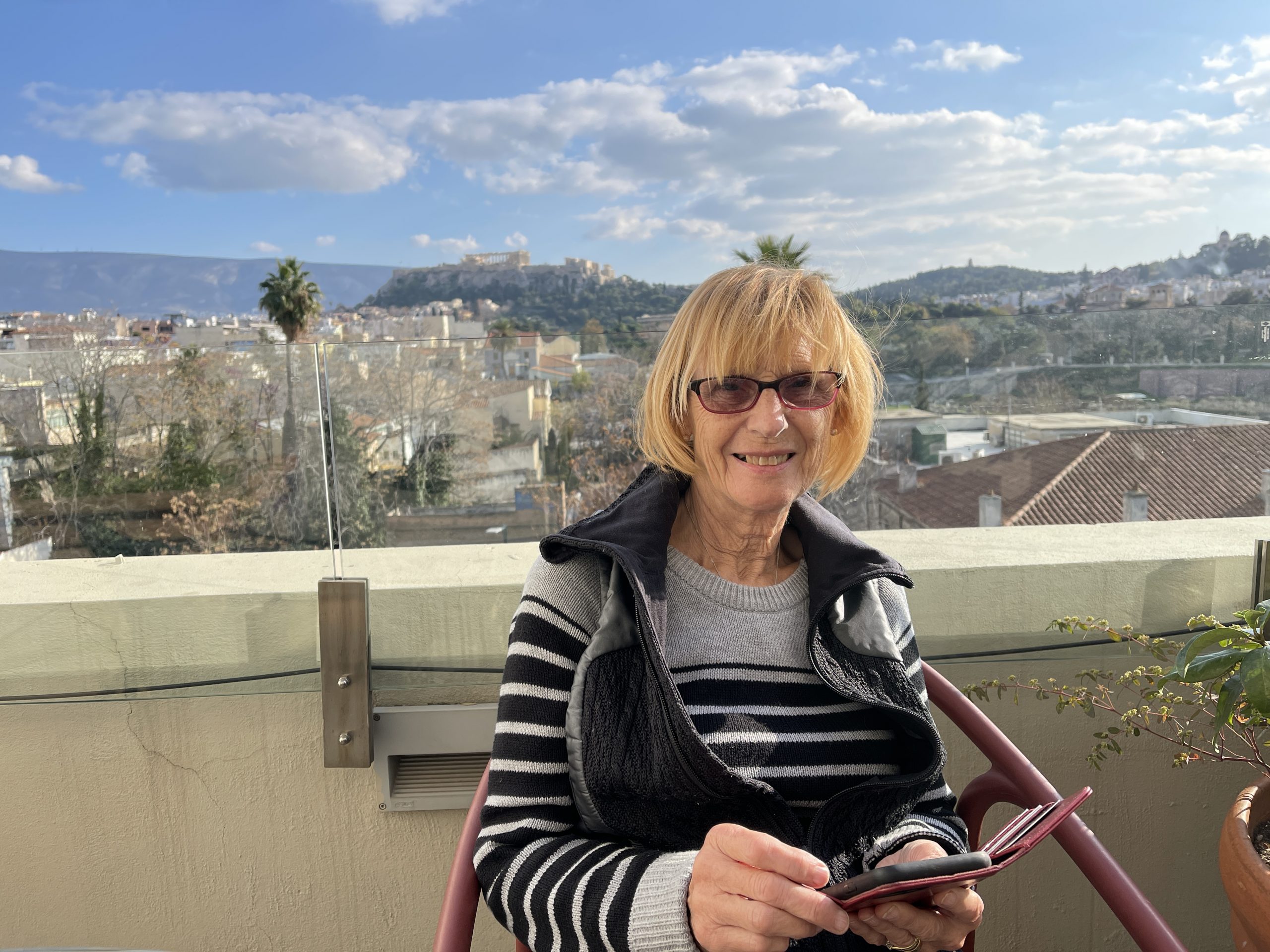 Lazy breakfast again then around lunchtime we set off for a hop on / off bus tour around Athens. Typical our starting bus stop has no indication of where the bus stops – only in Greece.
Lazy breakfast again then around lunchtime we set off for a hop on / off bus tour around Athens. Typical our starting bus stop has no indication of where the bus stops – only in Greece.
 Tours pretty good and weathers sunny. Get off at the Olympic stadium and have a stroll through the gardens followed by lunch. The we notice the guards (Evzones – see trivia below) outside the parliament are off on one of their marches, a performance not to be missed – this must have been where John Clees got the idea for the “ministry of silly walks”, bizarre see the video.
Tours pretty good and weathers sunny. Get off at the Olympic stadium and have a stroll through the gardens followed by lunch. The we notice the guards (Evzones – see trivia below) outside the parliament are off on one of their marches, a performance not to be missed – this must have been where John Clees got the idea for the “ministry of silly walks”, bizarre see the video.

The ministry of silly walks.
Afternoon tea on the balcony then yet again we have to walk down the slum street to the restaurant district. The restaurant district is very pleasant it’s just that slum street with a pavement more dangerous than a PC mountain hike. After strolling around aimlessly we finally find a restaurant that does sardines and pastico. All very tasty but I wonder if the sardines came out of a tin. Wendy manages some of the green turd like vine leafs and chicken dinner.
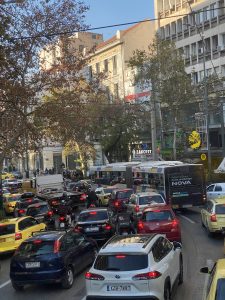 Back to the hotel for some wine – find a good wine shine shop for a merlot – and some more TV. Wendy’s convinced the moans, groans and slaps from the next door may indicate we’re in a brothel. Actually the hotel is a very swish 4 star with excellent service. Great big executive suite with settee, comfy chair, dining table and big balcony, with great views of the Acropolis. Just a pity that it’s in one of the more salubrious areas of Athens.
Back to the hotel for some wine – find a good wine shine shop for a merlot – and some more TV. Wendy’s convinced the moans, groans and slaps from the next door may indicate we’re in a brothel. Actually the hotel is a very swish 4 star with excellent service. Great big executive suite with settee, comfy chair, dining table and big balcony, with great views of the Acropolis. Just a pity that it’s in one of the more salubrious areas of Athens.

The Evzones is a special unit of the Hellenic Army, also known as Tsoliades, who guard the Monument of the Unknown Soldier in front of the Hellenic Parliament and the Presidential Mansion.
Through the historical movement of Greece, the Evzones have become symbols of bravery and courage for the Greek people.
The Presidential Guard, as the unit is now called, was constituted in 1868 and has taken many names through centuries (Guard of the Flag, Royal Guard, etc).
The duties of the soldiers are part of a ceremonial nature. Every soldier guards for about an hour, 3 times in total every 48 hours.
Throughout these 60 minutes, they have to stand perfectly still until it is time to switch with another guard.
During the changing, they work in pairs so they can perfectly coordinate their moves. The steps that the official ceremony requires at the time of changing are carried out in really slow motion to protect their blood circulation after 60 min of immobility.
The soldiers of the Presidential Guard are selected according to their height, excellent physical condition, and psychological state as well as character and morality, as they follow a hard training before they become part of this honorary unit. The training lasts for one month and includes exercises to keep the body and mind still. Apart from staying still, the soldiers must also not make any face or eye move and must not show any expression.
Their uniform has a historical meaning. It refers to the uniform of the Kleftes and Armatoloi, two groups of Greek warriors during the War of Independence in (1821) against the Ottomans. In fact, the white skirt of the uniform has 400 folds to represent the 400 years of Ottoman occupation over the Greeks.
The uniform consists of:
- the phareon which is the Evzone’s hat, made from red baize with a black tuft
- the white shirt with loose leaves
- the phermeli, which is the waistcoat and it is the most difficult part to construct, handmade with many shapes wrought on it
- the Greek kilt (or else foustanella), its structure requires 30 meters of white cloth
- the tsarouchia, the traditional shoes of Evzones which are red, made of leather, with a small tuft in front. Each shoe weighs three kilos
- the fringes, blue and white standing for the Greek flag
- the garters which are made of silk
- the leather belt
- the inside garnet
- and the gun which is the most difficult piece to carry, not only for its gravity but also for the physical pressure that exerts to the soldier’s body.
This is the official version of the uniform that the Evzones wear only on Sundays and National holidays.
The other days, the white shirt, the phermeli and the Greek kilt are replaced by the doulamas, a special uniform that the soldiers of the Macedonian Struggle (1904-1908) used to wear.
This uniform is blue in winter and brown in summer.
In official ceremonies, the Evzones also wear the traditional uniforms of Crete and Pontus, as recognition of the contribution of these regions in the national fights.
![]()
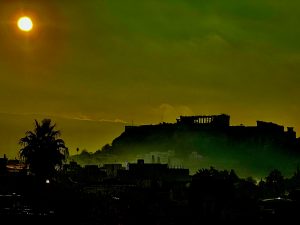 Awake to wind and rain. Spend most of the day hunkered down, but it all clears up mid afternoon.
Awake to wind and rain. Spend most of the day hunkered down, but it all clears up mid afternoon.
![]()
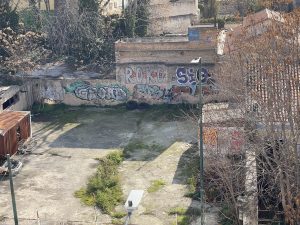
Athens, typical Mediterranean place.


Memories of Athens.
